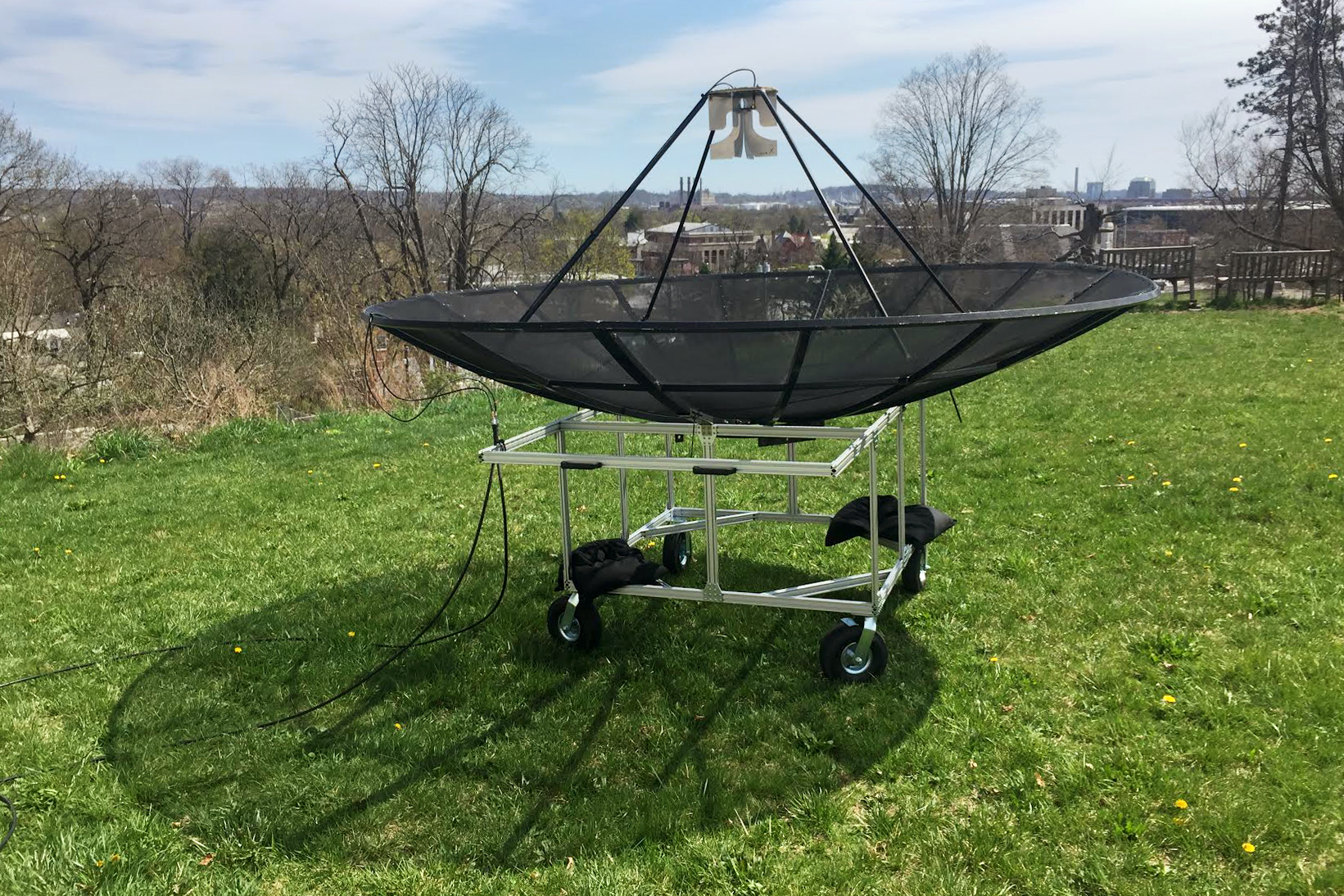Yale researchers develop telescope to test drone calibration
Researchers in Yale’s Newburgh Lab have been using the telescope to study a technique that could improve the accuracy of future radio telescopes’ measurements

Courtesy of Will Tyndall
A team of Yale researchers has developed a small radio telescope at Wright Laboratory and is putting it to use to study a technique that could be used to help calibrate the radio beams of larger telescopes.
The developing researchers hail from the lab of Laura Newburgh, an assistant professor of physics whose work focuses on cosmic microwave background radiation. The telescope uses radio waves and quadcopter drones to help fine-tune and adjust telescope beams — how telescopes see into the sky. The telescope was installed on the roof of Wright Lab in March 2021, after about a year of work.
“Most of the sophisticated science we do is designing the payload for the drone,” Will Tyndall GRD ’25, the project’s lead, said. “The telescope is quite rudimentary as far as scientific telescopes go. It doesn’t make scientifically valuable measurements, but what it does is it provides us with a way to measure the radio signals we’re producing with the drone.”
Tyndall emphasized that although the testbed telescope is an important component of the project, the drone is the key. He noted that the telescope is a 3-meter dish that may have originally been used for sports gambling, television or radio.
Tyndall said that the value of developing the drone calibration technique was driven by the budgetary constraints of research projects in cosmology, which often require massive arrays of telescopes. Unlike optical telescopes, which only take a single image, when using radio telescopes, astronomers take multiple readings. The resulting map created by these readings must then be deconvolved, or simplified to account for the shape of the telescope’s beam, which influences the images gathered by the telescope.
While Tyndall said that sophisticated, motorized radio telescopes which can be pointed in multiple directions exist, he explained that they were too expensive for many projects in modern cosmology.
“To do future generation experiments, you need thousands of dishes,” Tyndall said. “If you have a thousand dishes, the price per dish is suddenly a really important factor, and you need to find a way to save a lot of money. The way to do that is by building a really big array of stationary dishes … All of the money you have in each of these dishes has to go into the electronics, instead of motorizing.”
Although these non-motorized radio telescopes are often the only affordable option for researchers, they also provide less precise measurements than motorized ones, according to Tyndall. With more sophisticated, steerable telescopes, “you can do a lot of this beam calibration by just pointing at radio sources,” Tyndall said, but the same is not true for stationary telescopes.
Drone calibration techniques offer a potential solution to this problem. This approach uses the positional data of a drone in conjunction with the signal measured by a telescope to map out the telescope’s sensitivity in different directions.
“The drone can fly around and measure which way the telescope is looking,” Michael Faison, a lecturer of astronomy and the director of the Leitner Family Observatory and Planetarium, said. “If you have the drone directly over the telescope, you hope it gets a strong signal, but if it flies over here, 10 degrees off, how much signal do you get?”
Newburgh explained that researchers were already capable of using drones to calibrate the beams of relatively small telescopes, but in order to predict the beams of larger dishes, mathematical transformations had to be made to small telescopes’ measurements of the drones’ positions. The project focused on testing these transformations with measurements made of the drone by the testbed telescope.
While Tyndall said he enjoyed working on the project, he acknowledged that working with drones is not without its challenges.
“The drone actually flew away once because of a magnet that was on top of it and we had to rescue it out of a tree,” Tyndall said. “It’s a bit demotivating to have your thesis project in a tree with rain clouds coming in.”
Tyndall said a paper related to the project is currently in progress.







